Wild Edible Plants: Eating Nettles
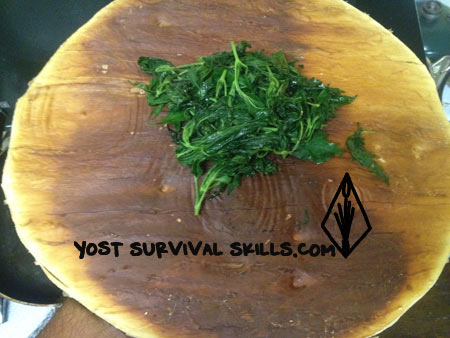
I love eating nettles early in the spring as they pop up from the cool ground, sometimes when there is still frost in the mornings. Nettles are one of the most nutritious edible weeds you can find.
Nettles are easy to identify and common throughout the US. Nettles can be dried and used later in soups, to make tea, or as a vegetable dish. This is an edible wild plant well worth knowing how to harvest, store and cook.
How to Identify Stinging Nettles
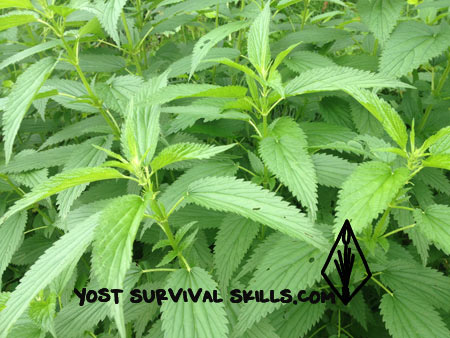
Stinging nettle is pretty easy to identify. The plant has tiny hairs made of what is basically glass. These hairs penetrate your skin and break, releasing a burning acid. It sounds much worse than it is and for most people, the pain is gone in about 30 minutes.
Nettles usually grow in well-established patches of two to 10 square feet. The plants are usually about 4 to 8 feet tall.
They grow in moist, rich wooded areas and places where the soil has been disturbed. I usually find them along rivers and streams growing in the shade.
The plants have simple, serrated leaves that come off the plant opposite one another. The underside of the leaves have the same tiny, stinging hairs found on the stems.
Honestly, just take a look at the pictures on this page to see what they look like.
How to Collect Nettles Without Getting Stung
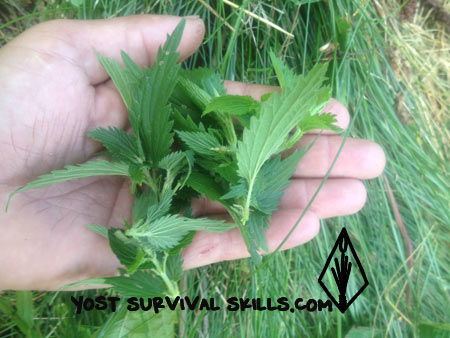
A pair of thin gloves will protect your hands from getting stung by nettles. But, I prefer to harvest nettles without gloves and don’t get stung very often. I find gloves are a bother and too cumbersome to mess with.
If you have calluses on your hands, you can probably collect nettles barehanded as well. The key is to only let the plant touch the palms of your hand. Most people, myself included, have tender skin on their wrists and the backs of their hands and get stung there.
Eating Nettles
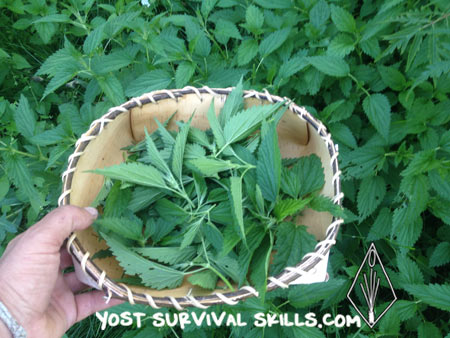
Nettles are delicious, nutritious and you can eat them all spring and into fall if you harvest them throughout the year.
In my various outdoor skills courses people often ask me if you can eat nettles. The answer is a resounding “Yes!” Nettles are one of my favorite wild edible plants. There are two edible parts of the stinging nettle plant, both require cooking. The beauty of that cooking process, no matter how you do it, is that it renders the plant totally harmless. The stinging qualities of the nettles disappear.
The first edible part of the plant is the young shoots. These are best when harvested when they are around 6″ tall, I typically collect the top three or four leaf pairs. These nettle shoots can be steamed or boiled for a few minutes and eaten with a little butter and salt, or plain like I do.
The second edible part of stinging nettles is the tops of the plants throughout the season any time before the flower heads develop. If it’s later in the growing season, I usually only take the top two or three pairs of leaves. Sometimes I get the top four pairs but the lower leaves can be a bit stringy.
The key to having nettles to harvest during the summer and fall is to pick (and eat) the top 4 or 6 sets of leaves on the plants after 10-20 sets of leaves have grown on the plant. When you pick the tops of the nettle, the plant will send out new leaves at each spot along the stem where the leaves come out. These junctures of leaves are called “nodes.”
After a couple of weeks, you can harvest the fresh, new leaves the plant sends out at each node. And, you can continue to do this well into fall. It is mid-August as I write this, and I am still harvesting young nettle leaves from plants that sent new leaves out from the nodes.
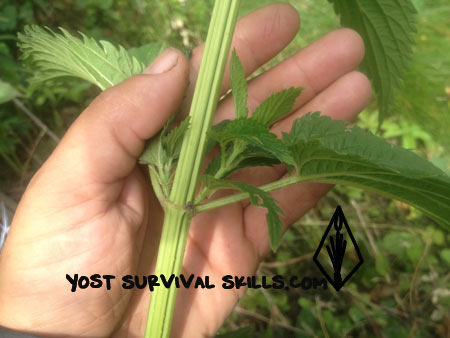
How to Prepare Stinging Nettles
Samuel Thayer has a great section on eating nettles you can see his site here.
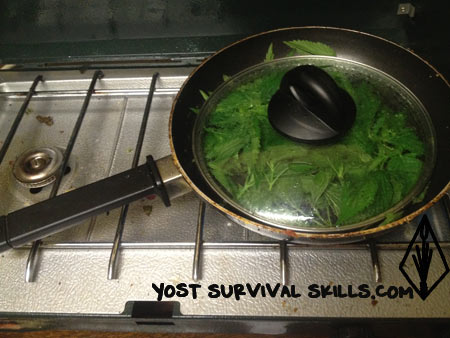
You can cook nettles the same way you prepare spinach. Either steam or boil it. Nettles will cook down to half their olume, so use more than you think you’ll need. Once the plant is cooked (or dried), it can no longer sting you.
My favorite way to make nettles is to put a little water in a pan and steam the leaves for a few minutes with the pan covered. Then I take the cover off and let most of the water evaporate. Next, I add some olive oil and fry them for a few more minutes. Eaten with a little butter, they are delicious. Most people who say they don’t like edible wild plants love nettles prepared this way.
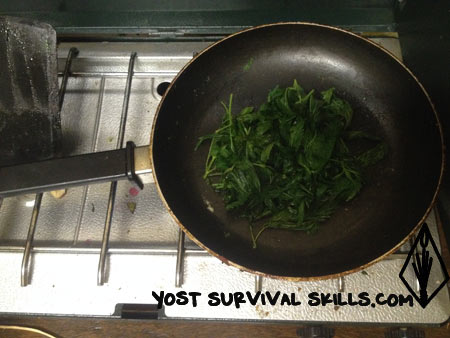
I’ve also made great quiches substituting nettles for the spinach. Eating nettles in dishes you’d normally cook is a great idea. In fact, you can use nettles as a substitute for spinach in any recipe for a healthier dish.
Making Nettle Tea
There’s not much to making nettle tea. The key is actually in drying the leaves in preparation for making tea later. You want to dry the leaves spread out in the sun. At home I use screens, in the wilderness I put the nettles on dark rocks. Take the leaves out of the sun as soon as they crumble in your hand. Then store them for later use. I usually put them in Ziploc bags that are cracked open about an inch and this works great for me.
To make nettle tea all you do is boil nettles with water for a few minutes. It turns a rich, dark green in a few minutes. I always eat the leaves leftover from the tea whether I am using fresh or dried leaves. You will find that nettle leaves are almost as good after they’re dried as when they are fresh.
The dry leaves can also be powdered and added to just about any dish to add color, heartiness and nutrients. You can even make a broth by adding salt to the dried, boiled leaves.
Preparing and eating nettles is easy and fun. This is one plant you will want to add to your wild edible plant knowledge base.
You can find more on using plants for food on my wild edible plants page.
